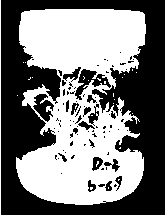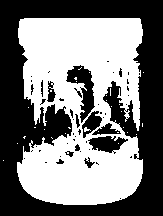Novel peony tissue culture rooting method
A technique of tissue culture and a new method, applied in the field of plant tissue culture, can solve problems such as unsatisfactory rooting effect, difficulty in obtaining regenerated plants, poor rooting quality, etc., achieve obvious rooting effect, enhance the transportation and accumulation of dry matter, and grow The effect of high flower rate
- Summary
- Abstract
- Description
- Claims
- Application Information
AI Technical Summary
Problems solved by technology
Method used
Image
Examples
Embodiment 1
[0027] 1. Establishment of sterile strains
[0028] Take the full scale buds from the mother plants of Doulu, Daojin, and Haihuang peony, remove the outermost 1-2 layers of scales, scrub with soapy water, then rinse with tap water, and remove the scale buds under aseptic conditions. Put it into a sterile triangular flask, and use a three-step disinfection method to disinfect the scale buds: the first step is to disinfect with 75% ethanol for 45 seconds, the second step is to disinfect with 1% sodium hypochlorite for 10 minutes, take it out and rinse it with sterile water, The third step is to disinfect with 0.5% sodium hypochlorite for 15 minutes, take it out and rinse it with sterile water. During the whole disinfection process, shake the triangular flask constantly to make the disinfectant fully contact with the buds. After disinfection, take it out and place it on sterile filter paper. The remaining scales were peeled off with sterile tweezers, and the scale buds of the thr...
Embodiment 2
[0036] 1. Establishment of sterile strains
[0037] Take the full scale buds from the mother plants of Doulu, Daojin, and Haihuang peony, remove the outermost 1-2 layers of scales, scrub with soapy water, then rinse with tap water, and remove the scale buds under aseptic conditions. Put it into a sterile triangular flask, and adopt a three-step disinfection method to disinfect the scale buds: the first step is to sterilize with 75% ethanol for 60 seconds, the second step is to sterilize with 1% sodium hypochlorite for 8 minutes, take it out and rinse it with sterile water, The third step is to sterilize with 0.5% sodium hypochlorite for 20 minutes, take it out and rinse it with sterile water. During the whole disinfection process, shake the triangular flask constantly to make the disinfectant fully contact with the buds. After disinfection, take it out and place it on a sterile filter paper. The remaining scales were peeled off with sterile tweezers, and the scale buds of the ...
Embodiment 3
[0045] 1. Establishment of sterile strains
[0046] Take the full scale buds from the mother plants of Doulu, Daojin, and Haihuang peony, remove the outermost 1-2 layers of scales, scrub with soapy water, then rinse with tap water, and remove the scale buds under aseptic conditions. Put it into a sterile triangular flask, and use a three-step disinfection method to disinfect the scale buds: the first step is to disinfect with 75% ethanol for 30 seconds, the second step is to disinfect with 1% sodium hypochlorite for 15 minutes, take it out and rinse it with sterile water The third step is to sterilize with 0.5% sodium hypochlorite for 10 minutes, take it out and rinse it with sterile water. During the whole disinfection process, shake the triangular flask constantly to make the disinfectant fully contact with the scale buds. After disinfection, take it out and place it on sterile filter paper. The remaining scales were peeled off with sterile tweezers, and the scale buds of th...
PUM
 Login to View More
Login to View More Abstract
Description
Claims
Application Information
 Login to View More
Login to View More - R&D
- Intellectual Property
- Life Sciences
- Materials
- Tech Scout
- Unparalleled Data Quality
- Higher Quality Content
- 60% Fewer Hallucinations
Browse by: Latest US Patents, China's latest patents, Technical Efficacy Thesaurus, Application Domain, Technology Topic, Popular Technical Reports.
© 2025 PatSnap. All rights reserved.Legal|Privacy policy|Modern Slavery Act Transparency Statement|Sitemap|About US| Contact US: help@patsnap.com



